Fargo is exciting, imaginative, original, and compelling; it makes everybody’s best-of lists, and despite that, the famously imitative Hollywood establishment hasn’t knocked it off. It’s sui generis; it defies imitation, because all of its unique features lock together so well.
It’s the production/directing/writing skills of the Coen brothers (Joel and Ethan), plus the acting talent of an ensemble cast, plus the absolutely unique but eerily authentic setting in wintry Minnesota that glue the audience’s eyeballs open for the entire runtime of the movie.
It also defies genre. It’s dark and thrilling, in places, for a comedy; it’s too funny, in others, for a drama. It’s not a police procedural, even though an unlikely but able cop effectively pursues a bizarre criminal conspiracy; it’s not a caper flick, even though an unlikely, impulsive and incompetent gang of criminals pursue a big score from end to end.
Guns don’t play that big a role in the production, despite the movie containing more murders of well-off white people than a typical year in Minnesota. Sure, there’s shootings, fatal and not, but there’s also an epic non-fatal beatdown, an ax murder, a chair murder (offscreen), and a firewood assault.
You also see Minnesota’s arguably greatest celebrity, the late Prince, in a bit role where he doesn’t show his face, and gets shot (he’s credited, as “Victim in Field,” by the unpronounceable symbol he once affected as a name).
Acting and Production
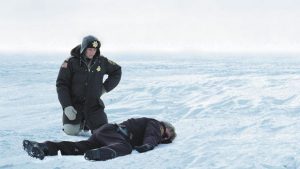 The acting is a strength of the production, or is it the script? Where does one leave off and the other begin? Frances McDormand won the Best Actress Oscar for her performance as Brainerd, MN, Police Chief Marge Gunderson, and seldom has a statuette been more deserved. McDormand could do 100 classic films, and this still will be the one for which she’ll be remembered. William H. Macy’s dangerous weasel of a car salesman, Jerry Lundergaard, is also a perfectly cast role. The two gangsters, Steve Buscemi as an impulsive, boastful sleazeball and Peter Stormare as a brooding, sociopathic menace, are the sort of criminals whose real-world existence the papers daily attest. You never think, “he’s acting a good criminal,” you think, “egad, what a criminal.” The second line supporting cast, mostly little-known but hard-working actors, make their roles come alive.
The acting is a strength of the production, or is it the script? Where does one leave off and the other begin? Frances McDormand won the Best Actress Oscar for her performance as Brainerd, MN, Police Chief Marge Gunderson, and seldom has a statuette been more deserved. McDormand could do 100 classic films, and this still will be the one for which she’ll be remembered. William H. Macy’s dangerous weasel of a car salesman, Jerry Lundergaard, is also a perfectly cast role. The two gangsters, Steve Buscemi as an impulsive, boastful sleazeball and Peter Stormare as a brooding, sociopathic menace, are the sort of criminals whose real-world existence the papers daily attest. You never think, “he’s acting a good criminal,” you think, “egad, what a criminal.” The second line supporting cast, mostly little-known but hard-working actors, make their roles come alive.
The production moves rapidly, and makes the cold, flat, barren landscape of the upper midwest into a character of its own, one that makes the viewer see the plausibility in car dealers’ get-rich-quick schemes and in the sordid interactions of professional, if small-time, criminals. The screenplay also won an Oscar, and like McDormand’s, it was well-deserved.
Accuracy and Weapons
For a movie with lots of cops on screen for lots of time, and depicting lots and lots of murders, guns are not as big a player in the movie as you might expect. The guns are plausible for the era and location. The cops still carry revolvers, Chief Gunderson, naturally, a Chief’s Special.
The bad guys seem to use one or more SIG 22xs, usually at “I seldom miss at this range” range.
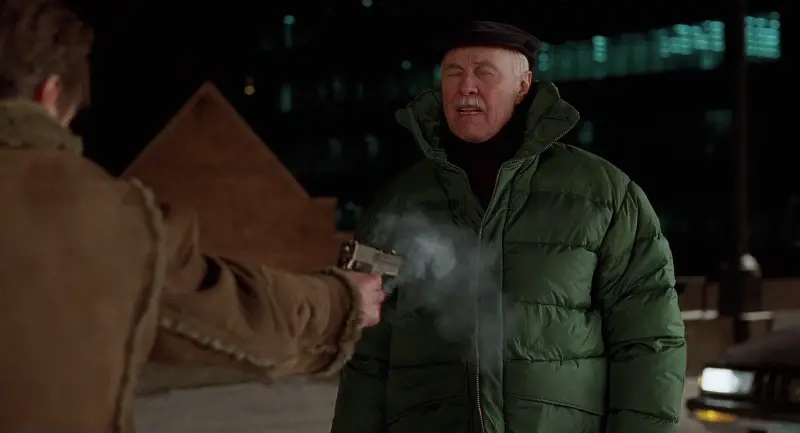 There’s no rifles, shotguns, tanks, Bearcats, or gigantic fireball explosions, but that’s par for the course for the 1980s and 90s.
There’s no rifles, shotguns, tanks, Bearcats, or gigantic fireball explosions, but that’s par for the course for the 1980s and 90s.
One inaccuracy of the on-screen gunplay is, well, excessive accuracy: every shot fired hits, even though they’re all fired by the worlds two least skilled classes of marksmen: criminals and cops.
Guns aren’t the only weapons used here. There are also many other personal and improvised weapons used in the various on-screen crimes and atonements therefor, including the legendary woodchipper.
There is an ax murder, that is not shown in graphic detail, but that takes place only after a ton of foreshadowing. Chekov’s Gun has nothing on Paul Bunyan’s Axe, and that’s all we’re going to say about that.
The bottom line
Fargo is a delightfully entertaining movie, with deep characters that deserve audience boos and hisses, and that earn that reaction by their actions on screen, not by moviemakers actuating tired old tropes. The Coens are famous for their refusal to ever make the same movie twice, and perhaps that is part of why they never make a movie that is dull or clichéd, but instead make entertainment that is not only worth watching, but almost impossible to stop watching. Fargo was 20 years old last year, and it’s time for it to find a new audience.
For more information
These sites relate to this particular film.
- Amazon.com DVD page:
- IMDB page:
http://www.imdb.com/title/tt0116282/
- IMFDB page:
http://www.imfdb.org/wiki/Fargo_(1996)
- Rotten Tomatoes review page (96%):
https://www.rottentomatoes.com/m/fargo/
- Infogalactic page:

Kevin was a former Special Forces weapons man (MOS 18B, before the 18 series, 11B with Skill Qualification Indicator of S). His focus was on weapons: their history, effects and employment. He started WeaponsMan.com in 2011 and operated it until he passed away in 2017. His work is being preserved here at the request of his family.

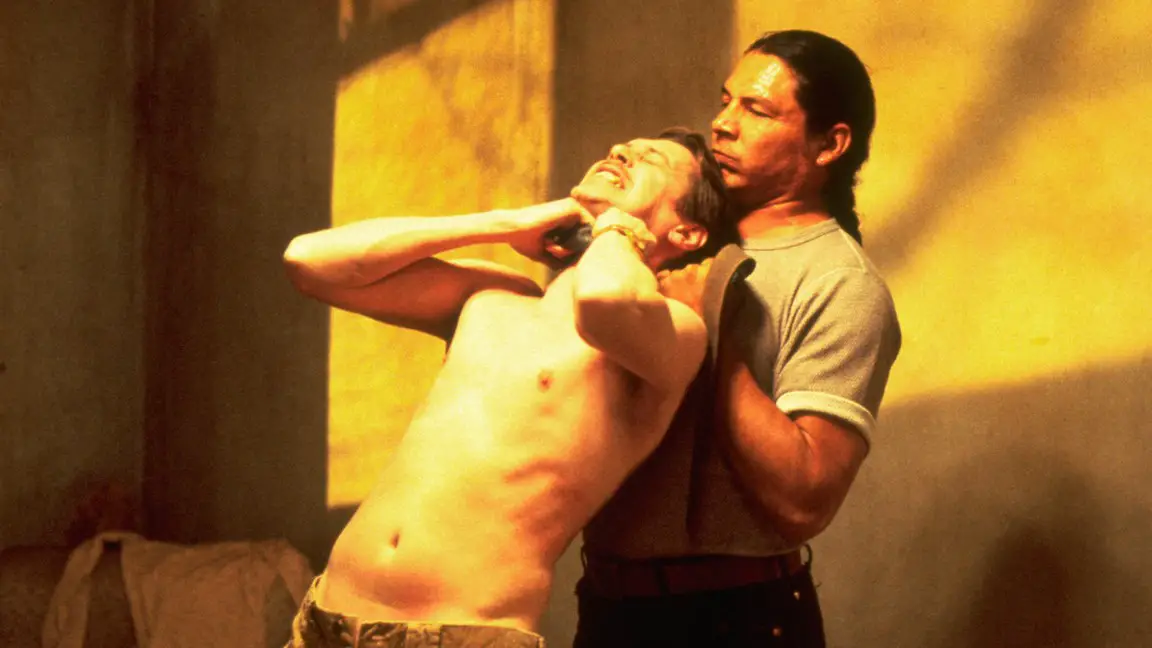
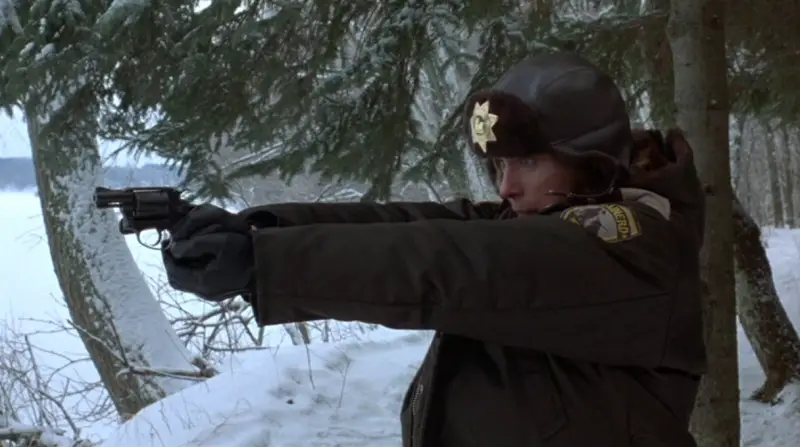
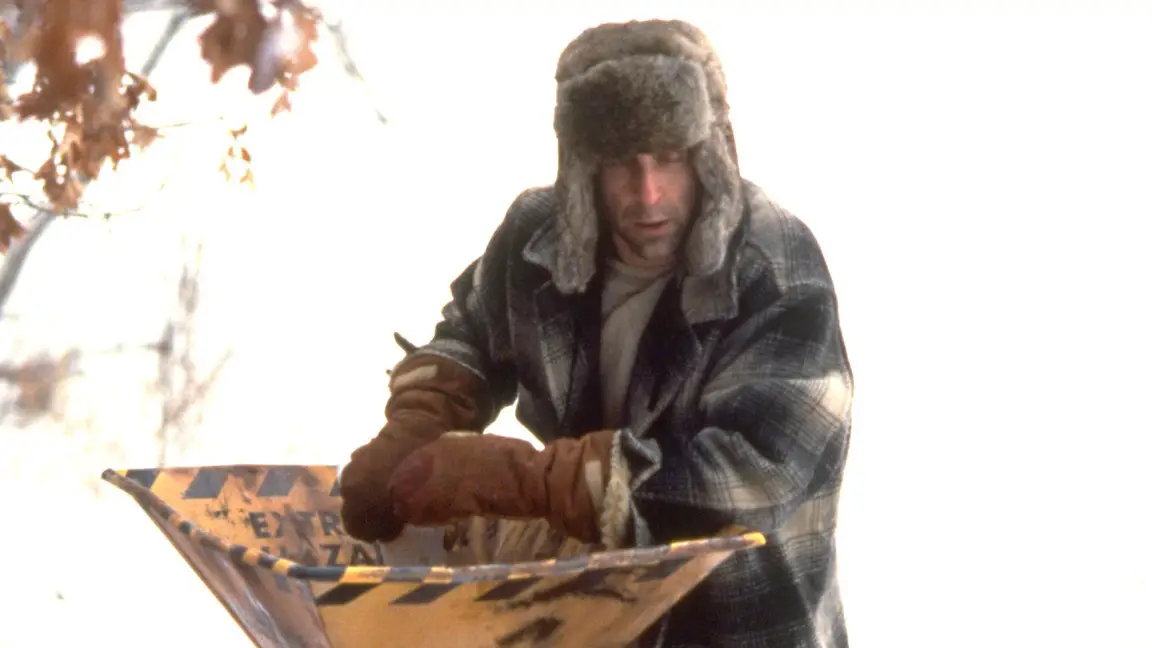
8 thoughts on “Saturday Matinee 2016 052: Fargo (1996)”
I see a side by side review of the two True Grits in the near future!
I expected to hate the “new” True Grit. I did not, and when I rewatched the “old” Grit, the over-the-top campy performance of Glen Campbell really chafed. Especially compared to John Wayne’s performance. He was really a powerful actor, much underrated. (The point in Island in the Sky where he is facing the camera, with his back to his stranded aircrew, and is encouraging them even though a search plane just missed them is wondrous. The crew can’t see, but you can, that he is lying to them, and his own confidence, too, has taken a hit. It is a moment that resonates with anyone who ever led men).
Boat Guy
The Duke was a GOOD actor (though he said on severla occasions that he didn’t “…act, but REACT”). I liked the new TG and thought Jeff Bridges (another somewhat underrated actor) as Rooster was excellent – without takign anythign away from The Duke). I also liked the gal who played Mattie much better than the original.
“Fargo” is a GREAT movie; the score also contributes greatly. The single least-believeable thing is the shot across the pond with the 2″.
The new one (Grit) supposedly hews much closer to the book.
Re: the Chief’s Special shot. The guns are as accurate mechanically as a 6″ Smith, but the short sighting radius makes them hard to aim. Now that I think about it, I seem to remember that Chief Gunderson nails her target on the second shot, so that would make one miss in the movie. Two, if the mortally wounded guy’s only wounding his assailant is graded against him.
The new one IS closer to Portis’ book; the spoken cadences and words are much more 19th century; obviously no one really cared about such things in the earlier film.
Yeah; my Model 64 shoots better than I do; I’ll have to run it out to 50-some yeards and see if I can make that shot. I do seem to remember that she connected with her second shot (certainly more realistic)
The new Fargo series is also quite good TV, though the first series veers towards magical realism a bit too much for my taste. Second one is better in that regard, though they do take their artistic liberties.
Your enthusiastic recommendation might just get me to watch Fargo.
I was a student at NDSU in Fargo when it came out. The accents were everywhere that year and man they grated. I’m surely biased but are we midwesterners really that bad?
That balances against generally being a Coen film fan. The Big Lebowski, True Grit, No Country for Old Men, Miller’s Crossing. Probably past time to give Fargo a chance.
O Brother Where Art Thou is also one I really liked.
Coen Brothers seem to be very hit or miss, but you always can see and admire what they were going for.